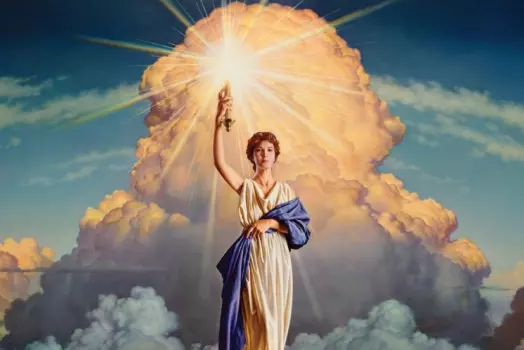Chances are, you’ve encountered the Columbia Pictures logo countless times at the start of a diverse array of films.
Nonetheless, the representation of the United States as a female figure standing proudly with a torch of liberty raised high may not be entirely what it appears to be.
Nonetheless, the image of the female embodiment of the United States standing upright and holding a torch of freedom high above may not be entirely straightforward.
In 1991, Columbia Pictures aimed to revitalize their logo and engaged artist Michael Deas to develop a new rendition of their classic depiction of a woman brandishing a torch.
Nonetheless, Deas struggled to locate an appropriate model for his painting until a friend of his, who was employed by The Times-Picayune newspaper in New Orleans, recommended someone who fit the bill.
The individual in question was a 28-year-old woman by the name of Jenny Joseph, who happened to be employed by the newspaper at that time.

Upon seeing Jenny, Michael immediately recognized her as the ideal candidate and arranged a photo session to capture images that he could use as a reference for his artwork.
During her lunch break, she consented to assist, stating that the artist had “draped a sheet around” her to accurately depict Columbia’s attire, while she held a small desk lamp as a substitute for the torch.
At a certain point during the photo session, Jenny requested to sit down and revealed to the artist that she was expecting a child at that time. Therefore, the famous depiction that appears in the opening credits of movies is actually of a pregnant woman draped in a sheet and holding a lamp high above.
After the photos were completed, Michael required two months to create the entire painting, which has been viewed by countless individuals ever since.
 It is important to differentiate Columbia from the Statue of Liberty, who represents the Roman goddess Libertas. However, mistaking the two is comprehensible due to their commonalities – both are female figures clothed in sheets and holding torches with significant connections to the United States.
It is important to differentiate Columbia from the Statue of Liberty, who represents the Roman goddess Libertas. However, mistaking the two is comprehensible due to their commonalities – both are female figures clothed in sheets and holding torches with significant connections to the United States.
The personification of Columbia was first mentioned during the Revolutionary War in 1776, and over the following century, she developed into a symbol of the nation, akin to Britannia of Great Britain and Marianne of France.
As time passed, her prominence declined, overshadowed by the representation of the Statue of Liberty, and she became primarily associated with being the woman depicted on the Columbia Pictures logo.



